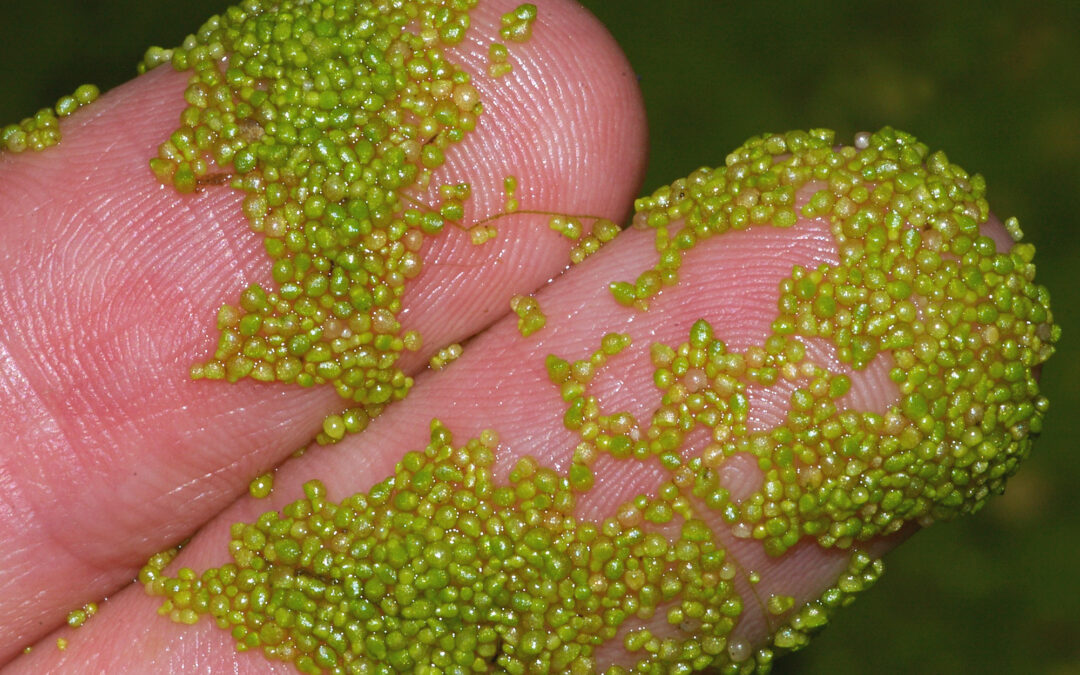Duckweed and watermeal are small plants that float on the surface of ponds, and while they might make your pond look unattractive, they can also cause more significant problems. When these plants grow thickly, they block sunlight from reaching the deeper parts of the pond. This means that underwater plants and algae can’t perform photosynthesis and produce oxygen. As a result, the pond ends up with less oxygen, which can stress or even kill the fish living in it.
This guide from Healthy Ponds helps you identify these aquatic plants and provides practical ways to manage them effectively, so you can keep your pond healthy and enjoyable.
What Do Duckweed and Watermeal Look Like?
Duckweed plants are quite small, typically measuring between 1/8 to 1/4 of an inch in width. They have a round shape and each plant has a single root hanging from it. On the other hand, watermeal is even tinier, so much so that it’s the smallest flowering plant known. Watermeal plants resemble tiny green seeds, and they are less than 1/16 of an inch wide. If you were to hold a bunch of watermeal in your hand, it would feel gritty, like rubbing cornmeal between your fingers.
Where Can They Be Found?
Duckweed and watermeal are more commonly found in ponds situated within or near wooded areas rather than in open spaces. These plants have a high need for nutrients like nitrogen and phosphorus, so they tend to thrive in places rich in nutrients, like ponds that receive runoff from farms, feedlots, and similar locations. Their presence near trees suggests that fallen leaves might also contribute nutrients to their growth.
How to Control Duckweed and Watermeal
1. Nutrient Management
Controlling duckweed and watermeal begins with addressing the underlying issue of excessive nutrient levels in the water. To reduce nutrient inputs, avoid using lawn fertilizers near the pond, manage leaf litter around its edges, and prevent runoff from feedlots and other nutrient-rich sources.
2. Physical Removal
Skimming the surface of the water to manually remove duckweed and watermeal can be effective. However, it’s crucial to dispose of the collected plants properly to prevent them from returning to the pond.
3. Use Watermeal Treatment
To reduce the amount of watermeal or duckweed in your pond, use an aquatic herbicide such as Healthy Ponds Sonar AS to effectively treat duckweed and watermeal.
4. Aeration
Using aeration equipment can disrupt the growth of duckweed and watermeal by increasing water circulation and oxygen levels. This can create unfavorable conditions for these plants to thrive.
5. Water Level Management
Adjusting the water level in the pond can also impact these aquatic plants. Lowering the water level during the growing season can expose duckweed and watermeal to drying conditions, reducing their growth.
Purchase Watermeal Treatment from Healthy Ponds Today
If you’re looking for a quick, effective, and all-natural way to control duckweed and watermeal in your pond, purchase our watermeal treatment products today. For more information, contact us!


